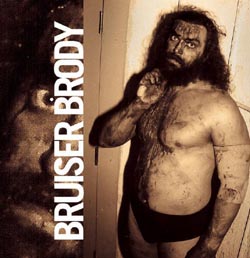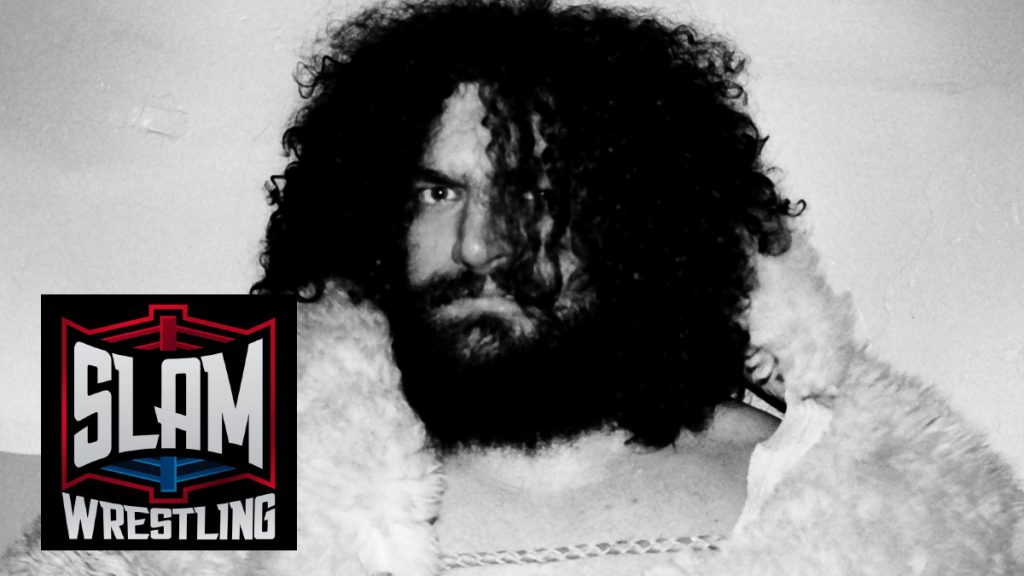Why not have the life of Bruiser Brody told by the people who knew him best? That is what the new book — simply titled Bruiser Brody — does. The book tells the story of the brawler through the words of those who wrestled and traveled with him.
Author Emerson Murray has a unique style, in that he uses friends, relatives, wrestlers and reporters to tell the real story of Frank Goodish, better known as Bruiser Brody.
The style and look of the book is the first sign that this book is different than wrestling books before it. Photos fill the stories told about those who traveled and knew Brody. Murray interjects rarely to include facts and set-up chapters, but it is really the research and interviews that Murray collected that made this book special.
“Originally the project was a documentary,” Murray told SLAM! Wrestling. “I shot some footage but ran out of money. I kept the project going by phone interviews, and that is when the notion of a book emerged.”
The heavy use of quotes made the book appear as a documentary. It became a documentary on paper, or what Murray called a “primary source biography.”
It is a book made for those knowledgeable of wrestling. Although the story can go on, knowing who guys like Harley Race or Bob Giegel are would be helpful as the book does not take time to explain who is the one sharing the stories. Murray makes sure you get the story of Brody and not those telling the story.
Goodish, although born in Pennsylvania, grew up outside Detroit in Warren, Michigan. He was All-State in both basketball and football, but chose football as his sport of choice. First attending Iowa State University and later West Texas State University, where he would be introduced to a laundry list of future wrestlers — Dory Funk, Terry Funk, Dusty Rhodes, Stan Hanson and Dick Murdoch, just to name a few.

Murray interviewed high school classmates as well as those who played with him in college. He interviewed relatives and journalists who covered the college. In college is where the wrestling story begins.
The rest of the book is a chronological account of his career. As Brody journeyed to different territories, Murray finds those who worked in those territories with Brody to tell the stories. Gary Hart shares stories about World Class while Stan Hansen, Dave Meltzer and the Funks talk about Japan. A chapter is built around Bruiser Brody being made King Kong Brody out of respect to Dick the Bruiser, who had been using the name for decades before Brody came along.
Collecting interviews is no easy task. Murray used personal interviews from himself and editor Scott Teal as well as archived interviews from Brody, Dick the Bruiser, Road Warrior Hawk and others to give a complete account of Brody’s life.
Teal, who co-wrote autobiographies of Ole Anderson, Ivan Koloff, “The Assassin” Jody Hamilton and James J. Dillon, was able to assist Murray with some of the interviews. Teal, though, admits he wish he could have gotten a few more interviews.
“Jim Ross, Buck Robley, Frank Dusek, King Curtis and Mark Lewin come to mind off the top of my head,” Teal said.
The book covers the good and bad. Gary Hart shares a story of Brody working high schools for little payoff so the school could buy new sporting equipment. But the more notorious side of Brody is shared as well. Brody was the biggest independent name in the 1980s, and came and went at his whim. His Japanese commitments paid better, and he used that to leverage his matches and bookings within the U.S.
Brody would meet Jose Gonzalez, the man who ultimately stabbed Brody to death, during Brody’s stay with the WWWF in 1976. Dave Meltzer and Tony Atlas talk about tension from the first meeting that may have led to their problems 12 years later.
The book ends with Brody’s death in 1988. Stories are told by those who were there. Murray let everyone tell their side of the story, and the reader is left to decipher what was embellished, what is truth and what is a lie. The inclusion of the actual autopsy report is a bonus.
The book is the first of two books being released about the life of Brody. The other, co-written by Brody’s widow, Barabra (who is not interviewed for Murrays’ book), and Larry Matysik (who is in Murray’s book) is set for early summer release by ECW Press. Murray knew he had to bring a different perspective when putting together the book.
The look inside the book is the first thing one will notice. “I’ve always thought wrestling books have been pretty dull looking,” Murray said. “I wanted my book to look like an art book. To look like something you would be proud to have on your bookshelf.”
Just because it looks like an art book, do not be fooled. The photos go along with the content to tell the ‘documentary.’ Some of the photos are rare, and some, quite honestly, don’t hold up that well when blown up big.
This is a smart wrestling fan book. No real time is spent on introducing characters and names being talked about. And although you may not recognize a few names, it does not take away from the stories they are telling.
The biggest weakness is Murray himself, who inserts opinions about situations unnecessarily. Addressing the trial of Gonzales for Brody’s murder in Puerto Rico, Murray writes that he “would still have liked to have seen Jose Gonzalez executed for the murder.” The author’s job in this style book should be to provide the structure and facts for the stories. The author’s commentary has no place in a biography and should have been left for a section at the end of the book. Murray doesn’t dominate the book or anything, but even one time is too many.
Unlike the run on autobiographies, where it is one person telling their side of their story. Bruiser Brody lets everyone tell their story. With the approaching publication of Brody: The Triumph and Tragedy of Wrestling’s Rebel by Matysik and Goodish, one can not judge which is the better book. Yet. But I’m quite comfortable in saying that Murray’s Bruiser Brody is told by first-hand accounts that are unique and fresh, and ultimately captivating, like the man himself.
The book’s first printing is individually numbered and can only be purchased online by going to Murray’s website: www.bruiserbrody.com.
RELATED LINK
